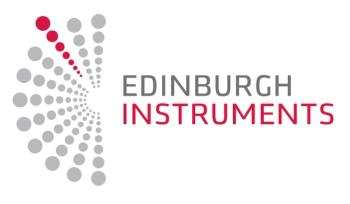
This application brief describes the procedure for measurement of 0.5 mg/mL solution of a-chymotrypsinogen in 10 mM NaCl buffer.

This application brief describes the procedure for measurement of 0.5 mg/mL solution of a-chymotrypsinogen in 10 mM NaCl buffer.

Determine the quantity and percent assay of paracetamol according to U.S. Pharmacopeia’s (USP) methods, and component concentration in pharmaceutical formulations.

Simple and fast solution for the measurement of sodium hypochlorite in a QA/QC setting where speed and accuracy are vitally important.

This application describes EPA method 354.1 as a template to accurately determine nitrite levels as ppm NO2- in O2 glycol-based aqueous engine coolants.







Semi-batch reactions offer several advantages over traditional batch reactions, such as greater selectivity of products, gradual addition of reactants for better process control, and the ability to isolate product as it is formed.

In this application note, we study a nicotine patch to reveal the active pharmaceutical ingredient (API) as well as the polymer layers encapsulating it via confocal Raman microscopy.

Sample digestion with the Milestone ultraWAVE takes around one hour including cool-down time.

This application note describes a correlative Raman–scanning electron microscope (SEM) investigation of a lithium-ion battery cathode before and after hundreds of charge cycles. The technique provides an exceptionally detailed chemical and structural analysis of degradation processes on the nanoscale.

Using an automated FT-IR reflection sampling accessory, the surface of a polymer-coated aluminum film was analyzed. Spectral results were used to investigate chemical uniformity across the sample area.

This application note demonstrates using ATR to examine the changes in surface orientation as a function of the distance from the injection point or gate.



To demonstrate the suitability of ICP-OES for fast, sensitive, and robust analysis of elements in water samples, following the DIN EN ISO 11885:2009 requirements.

Infrared reflection-absorption spectroscopy (IRRAS) is a powerful tool for the structural analysis of monolayers at the air/water interface.

The determination of mercury concentrations in environmental samples such as natural waters and wastewaters is important in environmental risk assessment.

Integrating Raman spectroscopy and holography, researchers are developing a system capable of in-situ monitoring of microplastics in our oceans depths.

In order to make combustion more efficient without major greenhouse gas emissions, quantum cascade lasers are used in a setup to study ignition delay times.

The Virsa Raman analyzer is ideal for fiber analysis; whether in a laboratory setting or in industrial research, development, or quality assurance.

FT-IR spectroscopy is a very sensitive method used in protein-biochemistry analyses. This method has proven to be very useful in pharmaceutical formulation of proteins.

Researchers at Heriot-Watt University deploy the Chromacity OPO for active long-range FTIR spectroscopy to acquire high-resolution gas absorption spectra over 200 m.

Analytik Jena’s High-resolution ICP-OES with high sensitivity complies with concentration limits of drinking water regulations without further accessories required.

This note demonstrates the suitability of ICP-OES for fast, sensitive, and robust elemental analysis of water samples, following the DIN EN ISO 11885:2009 requirements.

Teledyne Photon Machines and Glass Expansion present two interface designs that increase the flexibility and signal stability that can be achieved with the Irida system.

The Virsa Raman analyzer is ideal for fiber analysis; whether in a laboratory setting or in industrial research, development, or quality assurance.